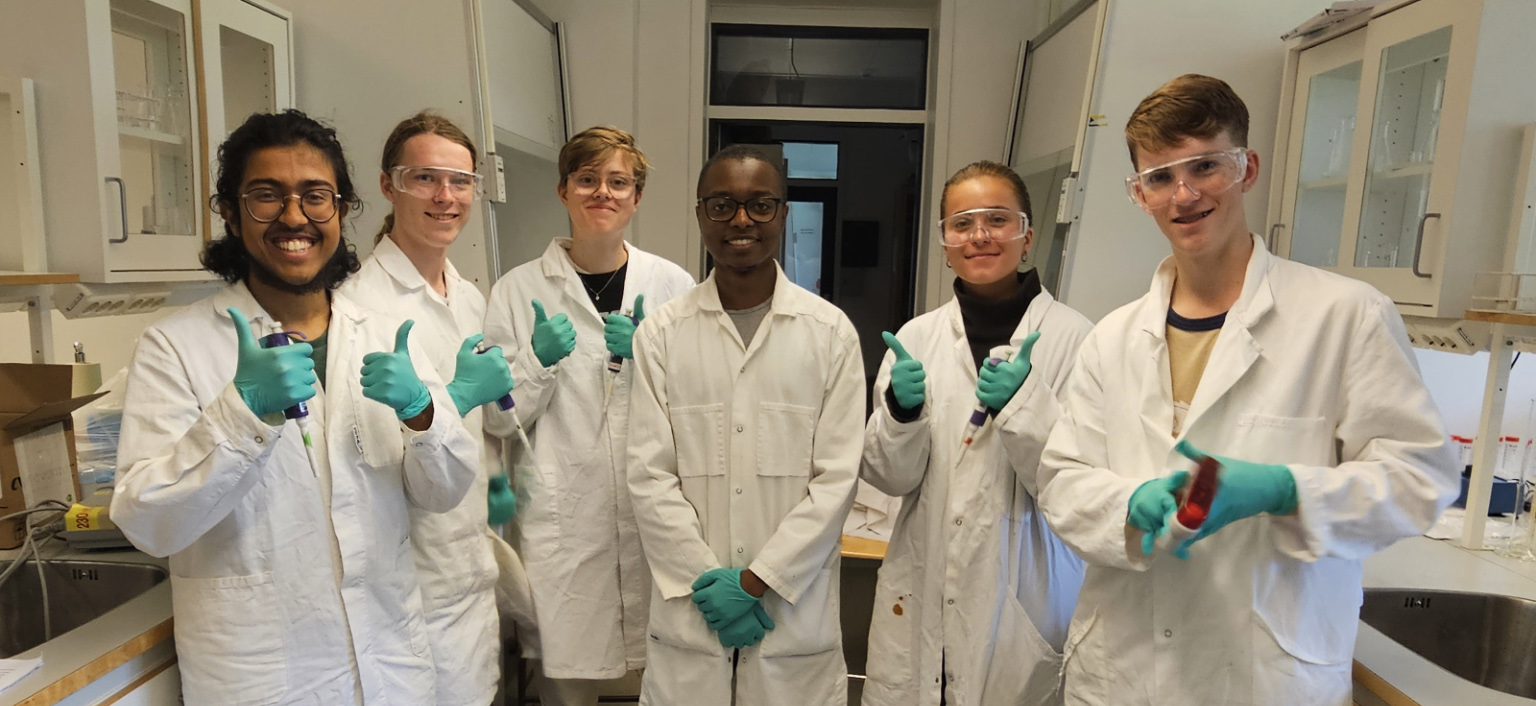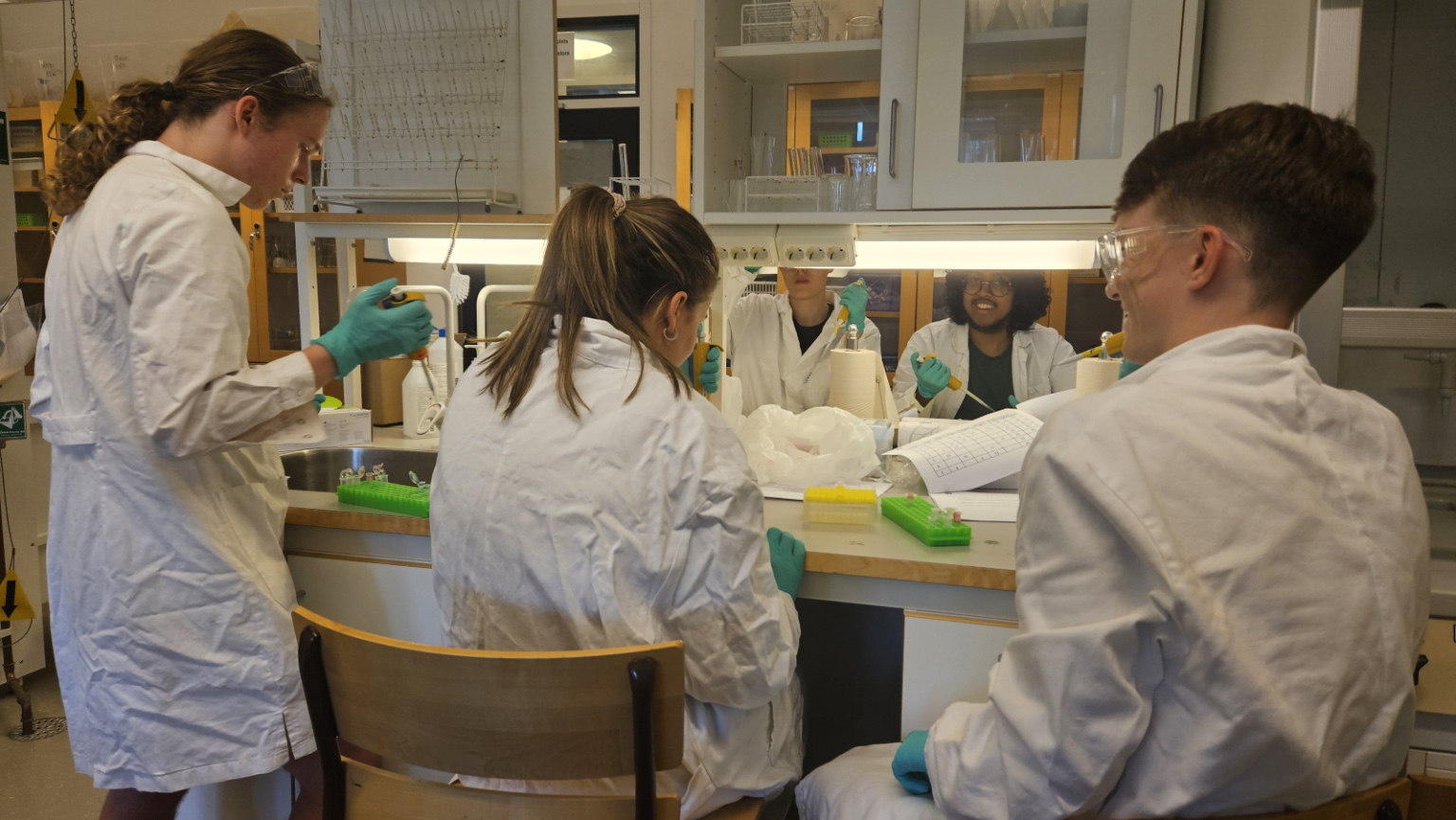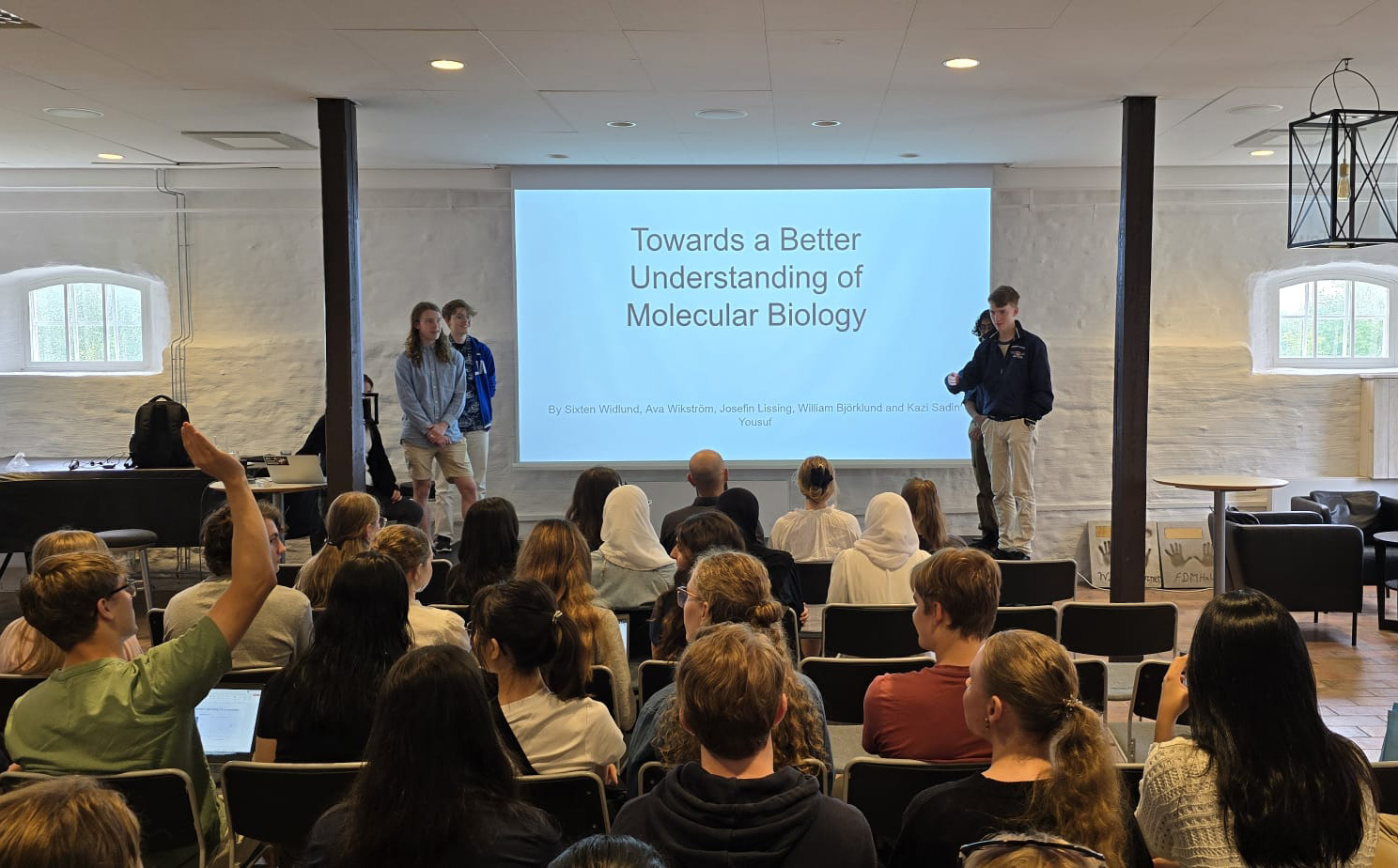
Enthusiastic students from left: Kazi Sadin Yousuf, Sixten Widlund, Josefin Lissing, myself, Ava Wikström, and William Björklund.
This summer, I had the opportunity to step outside the molecular biology lab at Umeå University and into a different kind of teaching environment – as a PhD student Scientific Outreach Ambassador. At the end of July, I travelled to Karlskoga in central Sweden to participate in Forskarskolan 2025 – a well-established, week-long summer science camp that brings together secondary school students and PhD researchers from across the country.
The goal of the summer school is simple yet powerful: to inspire young people to explore the natural sciences through hands-on research experiences. During this intense week, students work in small groups under our supervision, diving into real lab projects spanning molecular biology, bioinformatics, cancer mutation analysis, organic and analytical chemistry, and biopolymer synthesis. They also attend lectures by university professors and present their findings at the end of the week. And, of course, there’s plenty of time for fun games and team-building activities too!

I had the pleasure of supervising five enthusiastic students as they explored the world of molecular biology through three exciting lab activities. We started by learning how to use micropipettes – a tool scientists use every day to carefully pick up and mix tiny volumes of liquid, often just a few millionths of a litre. Getting the hang of this is an important first step in any biology lab!
In the second lab, we worked on a classic experiment in genetic engineering: introducing a glowing green fluorescent protein (GFP) into bacteria. The students got to see how genes can be switched on or off and how scientists can make bacteria glow by inserting a gene from a jellyfish – one of the coolest ways to learn about gene expression.
Finally, in the third lab, the students isolated DNA from their own cheek cells and looked at small differences in their genetic code using a method called DNA fingerprinting. This helped them see how each person’s DNA is unique by studying special regions that vary between individuals.

What struck me the most was the students’ energy, curiosity, and sense of teamwork – a powerful reminder of why science outreach matters. As researchers, we often find ourselves immersed in experiments, data, and publications. But stepping into a teaching role like this offers a refreshing perspective: it allows us to engage with the next generation, share the thrill of discovery, and demonstrate that science is not only rigorous, but also genuinely fun.
I am grateful for the chance to guide such a bright group and to represent my department in this important initiative. These students have enormous potential, and I hope their week at Forskarskolan i Karlskoga is just the beginning of their scientific journeys.

About Forskarskolan in Karlskoga
Founded in 1986, Forskarskolan in Karlskoga is a collaborative effort between Karolinska Institutet, KTH Royal Institute of Technology, Stockholm University, Chalmers University of Technology, Linköping University, Uppsala University, Örebro University, the Alfred Nobel Björkborn Foundation, and AkzoNobel.
//Lewis Murugu
PhD Student in Lena Svensson Lab

